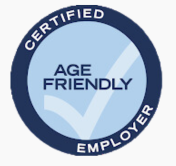You’ve made the decision: it’s time to make your job search a priority, but your technology skills are holding you back. You’ve been out of the workforce for 5, 10, maybe 15 years or longer, just as technology has rapidly changed how we work. You haven’t stayed current with the latest software required for the jobs you desire.

Sound familiar? The honest truth is that having good technology skills is expected in today’s work environment, and weak technology skills remains a top concern for employers hiring career re-entry candidates. The good news is that it’s never too late to learn new skills. Not sure where to start? Today is the first in a 5-part series which lays out the steps for a new, tech-savvy you.
Let’s start with a brief explanation of the 6 steps which can lead you to technological proficiency in the career you will love.
Step 1. Identify the BASIC Technology Skills Needed in Today’s Workplace.
Depending upon how long you have been out of the workforce, you may find yourself confronted with significant changes in how technology is used in today’s working environment. Chances are you’ve used some version of Microsoft Office Suite, but are you proficient in the latest version? Have you been out of work long enough that you never really used online calendar tools, smart phones, video conferencing and social media in a professional work environment? Stay tuned for Part 2 of this series for a more detailed run-down of the BASIC skills you will need to survive in today’s workforce and how to master them.
Step 2. Identify SPECIALIZED Technology Skills Needed for the Work You Love
So what other skills will you need? You will have to do some research. This will be more complicated than identifying the general technologies discussed in Step 1. I will cover how you can successfully identify and familiarize yourself with the industry specific technologies that are used in today’s work settings.
Step 3. Take a Skills Assessment Test or Two or Three
My general sense, after years of interviewing and placing career re-entry candidates, is that people are all over the map when it comes to how accurately they rate their own technology skills. I will identify resources that will provide you with a more accurate benchmark of where your skills are currently.
Step 4. Learn as Many Skills as Practicable BEFORE You Apply for the Job
Once you determine the skills you need and where you are deficient, be proactive. There are a number of great resources available to help you gain the technology skills you need to be competitive in the job market. This blog series will identify these resources and direct you to them.
Step 5. Find Opportunities to Apply the Skills You’ve Learned in a Work Setting
Unfortunately, sometimes it’s not enough to acquire the technology skills you need to do the job. Some prospective employers will want to see that you’ve used these skills in work settings. You will learn a number of strategies to help you circumvent this challenge and possibly land you a job!
Step 6. Demonstrate to Employers that Your Technology Skills Are Strong
This is a must. It is no longer acceptable (was it ever?) to respond “I am a fast learner and pick up new technologies quickly.” Follow this blog series for tips on how to demonstrate during the interview process that you do in fact have strong technology skills.









